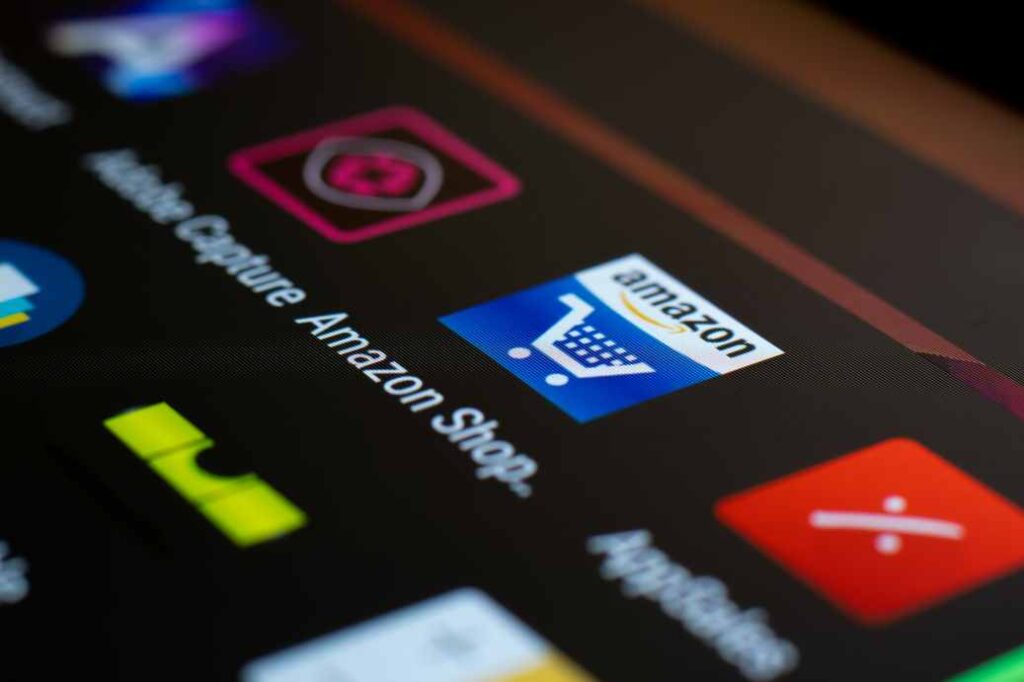Let me start out confessing that I have a love/hate relationship with Amazon. I bet a lot of you reading this suffer from the same malady. Amazon is like the giant squid threatening to swallow up Tokyo – seemingly unstoppable. They gobble up entire markets and drive retailer and e-tailers out of business.
And when you make a purchase from Amazon, you put more money into the pockets of the world’s richest person, Jeff Bezos – as if he needs a few more bucks. Personally, I would rather enrich the small company struggling to make a go of it. Yet, like many of you, I still contribute to Amazon’s domination because of their selection, pricing and service.
I spent a good part of my career in the B2B software industry playing David against industry Goliaths and always enjoyed the challenge and occasional victories. There is satisfaction in competing against the biggest –sometimes also the best and sometimes not.
With all this in mind, why am I such an admirer of what Amazon is doing? More importantly, what are the lessons we B2B companies can learn from Amazon to make us stronger and more successful?
Lesson 1: Deliver incredible customer experience (CX).
One of the hallmarks of good CX is to make sure your customers don’t need service in the first place – in other words, give customers a positive experience at every state of the buying and usage process. Amazon excels at this. You get what you ordered, when you are supposed to (usually) and the experience is mostly pain-free – even pleasant if you are one of those who enjoys shopping online. And if something happens, they take care of customers quickly and efficiently.
CustomerThink.com has lots of information on how to improve your B2B CX game, but here are a few suggestions:
- Remember that B2B companies are comprised of individuals that appreciate similar (or better) levels of service as when they deal with B2C companies.
- Don’t overpromise – meet expectations routinely, and exceed them when necessary.
- Map your customer journey to ensure you know how to satisfy customers at every touchpoint.
- Communicate often and transparently, and encourage this to be a dialogue, not a monologue.
- Offer multiple communication channels including, phone, chat, email, online forms, etc.
- Set your KPIs, benchmark the current numbers and set your company on a path of constant improvement.
Lesson 2: Make your brand/solution easy to find in search engines.
Amazon is a master at two aspects of search. First, at being high in the search rankings. You will usually see Amazon in the first group of page one search engine rankings. But even more importantly, when you search for a particular item on the Amazon website, you will quickly find the results, expertly ranked by relevance. Most other online and on-premise companies can’t compete. On many occasions, I’ve searched for a particular item that I know a company has, yet it doesn’t show on their search results.
As I tell my B2B clients: never, ever lose business to a competitor because prospects can’t find information on your website. This is so important that I consider Search Engine Optimization (SEO) a baseline marketing expenditure. And since there may be multiple decision makers and influencers, you also need to target your off-page and on-page SEO to attract unique audiences (e.g. IT, management, finance, etc.).
Lesson 3: Master the upsell and cross-sell.
Upsells are when a customer purchases an item related to the initial product, and cross-sells are when a customer buys something not related to the initial product. Both types of sales can add hugely to your own bottom line because there is no incremental cost in bringing in that revenue.
Jeff Bezos has stated that an emphasis on upselling has added 35 percent to Amazon’s bottom line. He understands that the best time to get customers to buy more is at the point of initial purchase, using techniques like:
- “Customers who bought this item also bought…”
- “Customers who shopped for ____also shopped for…”
- “Frequently bought together…”
- “Customers who viewed this item also viewed…”
- “Sponsored products related to this item…”
As a B2B company, you practice upselling when you promote a service plan or training with your B2B product, and cross-selling when you include a totally different software program (e.g. CRM plus invoicing) as a bundled offer.
Lesson 4: Provide deep product information.
In Amazon’s case, when you peruse a particular product, you will see a fairly detailed description, full specifications, tons of customer reviews, and photos and brief descriptions of related products and competitive products. The goal is to give you all the information you need to make a purchase decision. And lest you think this only works for low-priced products, Amazon sells products ranging from a few cents to $1.5 million. Bottom line: the company that shares the most relevant and credible information usually wins.
Content is especially important to B2B buyers. As this Martechtoday.com article shows, “The average B2B buyer’s journey involves consumption of 13 pieces of content, including eight vendor-created pieces and five from third parties. Make sure the prospective buyer finds the content they need on your website, not your competitor’s website.
Lesson 5: Buy market share.
Five years after its founding, Amazon was losing over $600 million per year on a net operating basis, and the company took 10 years to start turning a profit. This strategy will not work for all B2B companies, or even most. It requires patience and investors with deep pockets. But when it does work, it works incredibly well.
CRM company Salesforce is a great example of this on the B2B side. Started in 1999, it did not turn a profit until 2005. Not only was the company well-funded, it raised an additional $110 million in its public offering in 2004. Its sole-focus seemed to be grabbing market share, even at an initial loss. Founder Marc Benioff understood that once companies starting using his service and inputting their prospect and customer data, he would retain those prospects indefinitely and reap large profits.
Lesson 6: Practice continuous innovation.
Amazon Web Services (AWS) is a good example of innovative B2B thinking. AWS was started in 2006 to provide on-demand cloud computing platforms to companies, individuals and government organizations. According to this article, “During a 2003 executive retreat at Jeff Bezos’ house, the Amazon leadership team was asked to identify the core strengths of the company. One thing became abundantly clear: Its infrastructures services gave them a huge advantage over their competition.
Today, AWS adds over $10B a year to the company’s revenue.” Every B2B company needs to do its own version of leveraging its intellectual property to drive more revenue.
Summing It Up
I am not one of those consultants who will tell you that you can be the next Amazon (or Salesforce). Bezos had a unique set of circumstances, plus the money, talent and persistence to create a phenomenal success. But you can certainly leverage the Amazon lessons to create your own version of greatness, on whatever scale is best for your B2B company and its stakeholders.
Guest post by: Christopher Ryan CEO or Fusion Marketing Partners and Center for Business Modeling. Chris is a SCORE colleague and a marketing and sales maven. We are super fans of each other’s work. The article originally appeared June 5, 2020, at CustomerThink.com and is reproduced here with the author’s permission.












